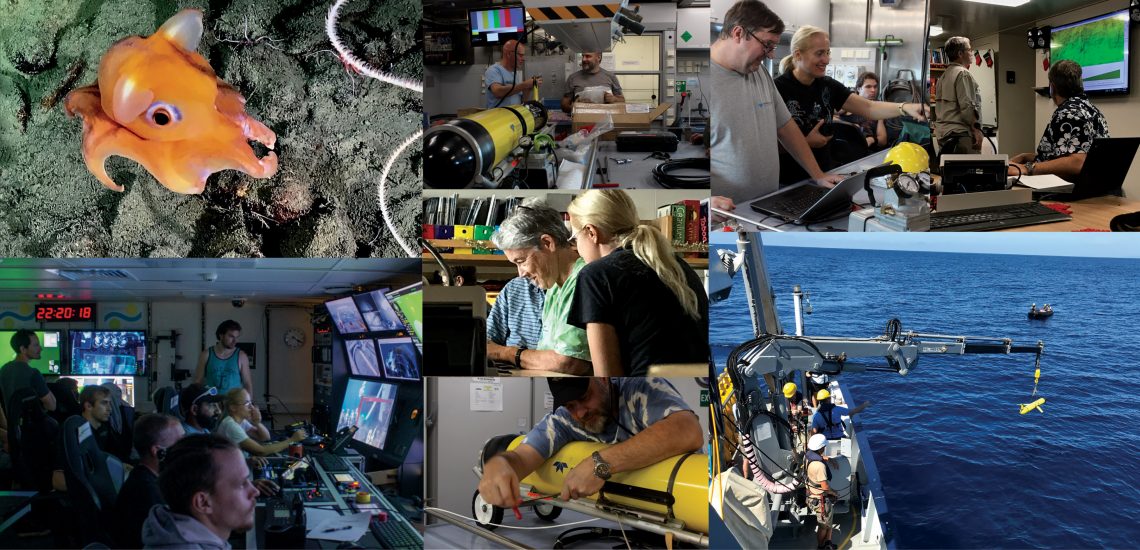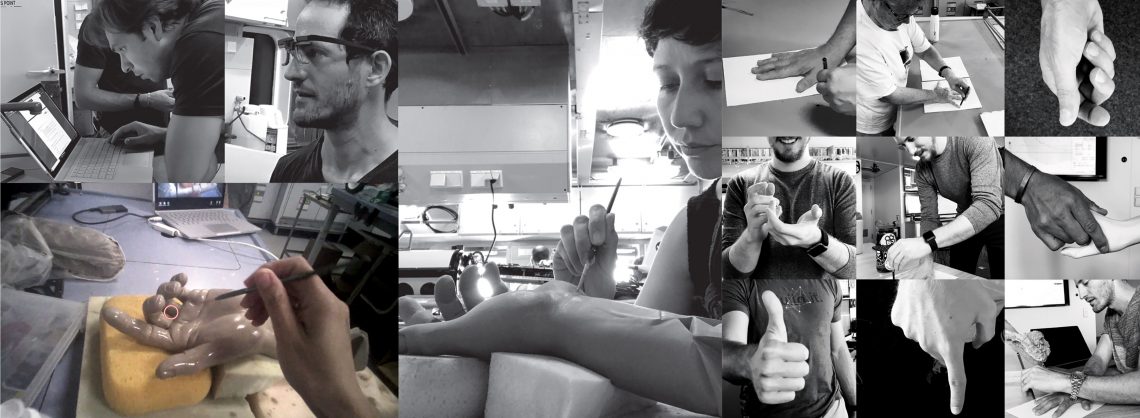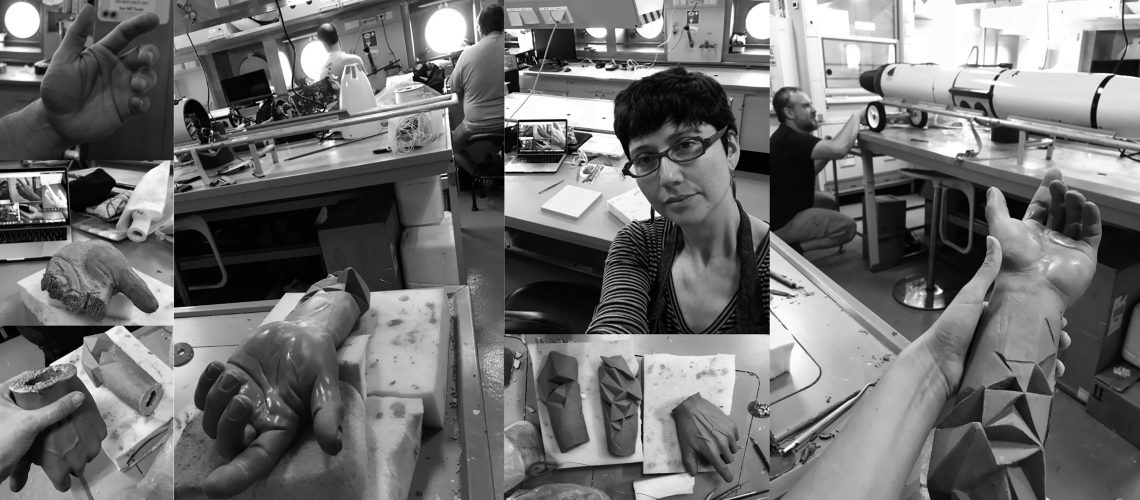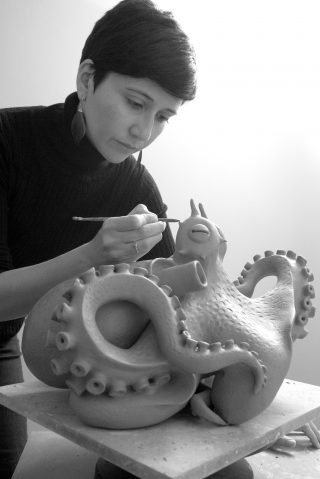I am interested in how creativity emerges, how ideas are formed in unexpected ways in both art and science. I can imagine that for every Artist-at-Sea and for every researcher that has been part of an oceanographic cruise on the Falkor, there have been a variety of very specific circumstances that inspired and triggered their work, making advancements in their research. Generalizations are probably hard to make. However, I feel confident about making one: that it is very unlikely that an artist or a scientist has come through this experience unchanged or uninspired. Creativity implies an ability to perceive the world in innovative ways, to make connections between things you have not paid attention to before, to see problems with fresh ideas and openness.
When you are as a scientist or an artist in this simultaneously restricted space (a ship), in a limitless environment (the ocean), life becomes clearer and simpler. Being surrounded by brilliant and talented people (I honestly think that creativity is contagious) and having the opportunity to be amazed together by the wonders of life on earth – like we did in this expedition while we explored the deep sea of the Costa Rican Shelf, watching Dumbo octopuses, amazing polychaete worms, and fantastic looking fish – is the perfect ecosystem for creativity to unfold.
 Spaces for Creative Collaborations
Spaces for Creative Collaborations
In my previous blog, I explained the reasons that drew me to work with clay on this trip, but maybe more important than the material was the opportunity to really spend time with the scientists themselves. The experience on the Falkor gave me the opportunity to share time with this group of engineers and scientists while they were troubleshooting, experiencing unexpected challenges, and while they were feeling excited with the advancement of the research. It is not only about talking out the rational arguments of the research itself, but to have the opportunity to witness how their ideas are forming in between lunchtime conversations, science meetings, troubleshooting while a machine is not operating well, amid moments filled with sense of humor, or sleepless time in front of a computer while mapping the ocean floor. For that, I have to thank them for the way they integrated me as part of their team, let me participate in their science meetings, hang out in the control room while they were exploring the seafloor with ROV SuBastian, by letting me work with clay while they were repairing the glider or processing samples in the same room, by letting me give a short talk on my project, and by allowing me take photographs, videos, and measurements of the their hands for the piece I started to develop. In a similar way that they will will continue to work on their data when their back at their labs and offices, I also have a lot of material and artistic data that I have gathered in this trip that I will use the next two months to develop my artwork. More than likely, the co-creative aspect of this piece will not stop here, as I will follow their work, and write some emails to share the advancement of their hands, and ask some questions.
 What Is My Art Work About?
What Is My Art Work About?
I am a scientist too (a biologist that works in ecology and reproduction of invertebrates), but I have found through my art work with scientists of other disciplines that we all have our own idiosyncrasies; our own discipline-driven way of looking at the world through different frameworks, our inherent tendency to ask certain types of questions first (what is the ecological niche of a given species versus what algorithm describes that behavior? for example). So the exercise of trying to portrait the scientific processes of this expedition through sculpture forced me to come out of my subdiscipline and rethink my sculpture process, which has been always based first on biodiversity and the forms of organisms.
My easy way out would have been to do sculptures of the organisms we watch through the cameras of SuBastian. However, given that I wanted to portray the humanness and collaborative work of their expedition, I decided to make sculptures of each of the researchers’ hands in a position chosen by them, and which represented their role in the expedition. Each hand will show the process of turning experience into data, and I will use image transfer techniques to put in the surface of the sculpture their handwritten notes and diagrams, data and graphs they will be developing for the papers of this research. Hopefully (I am still in the process of developing that idea) the hands will also come together sculpturally in a way that it will visually show the emergent property of a collaborative research and which will be sculpturally interesting. Honestly, they all surprised me with their willingness to be seriously playful, to think thoroughly on what hand gesture represent them better, to let me take measurements, photographs, and videos of them and by allowing me to be in their creative spaces. For example, Peter Vrolilijk and Richard Camilli suggested that I incorporate sediment obtained at 1741m below the surface in my clay work, which I thought it was absolutely awesome! So, I will be testing in my kiln the properties of this sediment to see how to incorporate it in the piece. Also during this time, thanks to the graduate student from MIT Gideon Billings, I even got to try a cool eye-tracker while I was working on the first hand of the series (for me thinking also happens though my hands, so I needed to work in clay in at least on the hands while I was on the Falkor). I learned with the eye-tracker that that my eyes jump on to the next task while my hand is still working on the old task in the sculpture. How will that help me or influence my process? I have no idea, and that is for the me the summary of this experience: you never know where curiosity is going to lead you, but it will definitely make life interesting and potentially creates paths for creativity to unfold.


